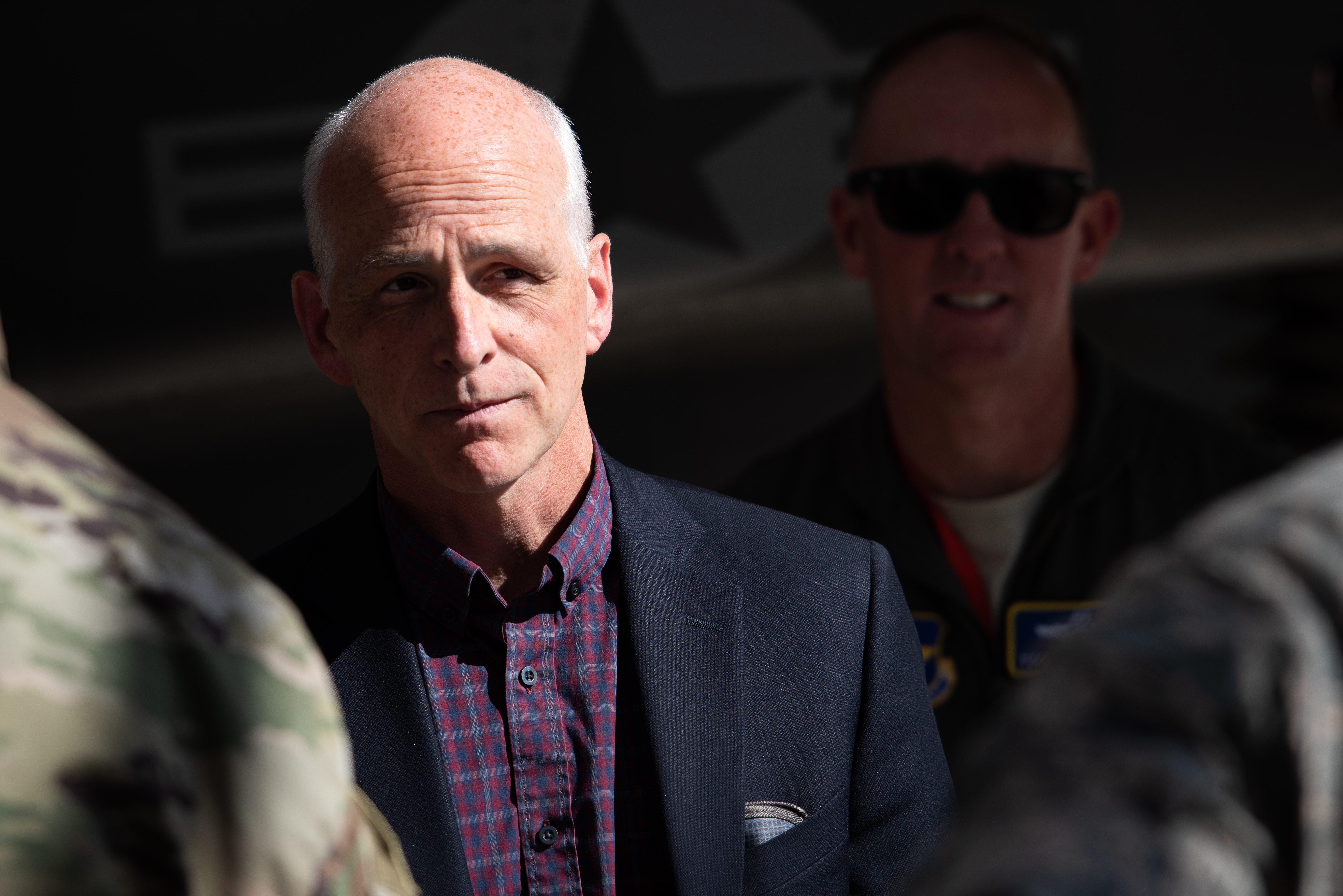
Questioning the $12 billion price tag of new aircraft carriers, the chairman of the House Armed Services Committee said “presence still matters” in reassuring allies in the Persian Gulf and the South China Sea so they have a role in future strategy.
Rep. Adam Smith (D-Wash.) said the cost of USS Gerald Ford (CVN-78) and the other follow-on carriers in the class is “something we will have to analyze” in the National Defense Strategy that the Biden administration is undertaking.
“It’s still a mobile platform” that has value, he said.
“Are there other ways to get close to the fight,” Smith asked rhetorically in an online discussion Tuesday with the Brookings Institution. Alternatives he suggested could include long-range strikes using unmanned aerial systems to keep the carriers out of the range of an enemy’s missiles.
Smith was speaking the day before the HASC marks up its version of the Fiscal Year2022 National Defense Authorization Act. That budget would call for $753 billion for the Pentagon and nuclear weapons programs under the Department of Energy.
When asked about the future buy of F-35 Lighting II Joint Strike Fighters, also a target of congressional criticism over steadily rising costs, Smith said it depends in part upon sustainment costs. He was hopeful that, with two manufacturers ready to produce engines that could be used on both the F-35 and a next-generation fighter, sustainment costs could be reduced.
But Smith said advances in competitors’ air defense systems have made the F-35 more vulnerable in some missions than originally expected when it was designed. One way around that new threat is to invest in “smaller, more survivable platforms, unmanned,” he said.
As he has often argued in the past, Smith emphasized capabilities over numbers. He added that former Defense Secretary Mark Esper was heading in the right direction with the Navy in looking to a future with unmanned systems and attack submarines.
“Survivability has become the biggest issue” from information system attacks to assaults on command and control systems, especially nuclear, or a drone swarm attack overwhelming missile defense systems.
“How can we build systems better?” is the question that needs answering, Smith said. He pointed to the Navy’s new Constellation–class frigate program as one that’s emphasizing survivability in a contested environment.
“You want to make sure any weapons you have operate” when needed, he said.
Smith said the Pentagon’s Joint All Domain Command and Control (JADC2) “makes sense” because it is integrated and moves away from “a single point of failure” that could affect an operation.
‘I do not underestimate the difficulty in achieving that,” he said.
Smith said “there’s a finite amount of resources; there’s a finite amount of focus” that can be brought to thinking about national security strategy. He listed deterring China, Russia, North Korea, Iran and transnational terrorists as posing the greatest immediate threats to the United States, allies and partners.
“What are we trying to do to succeed” in deterring these nations or groups from acting, he asked. He praised the Biden administration for its “integrated deterrence” approach – economic, diplomatic, as well as militarily – in strengthening national security in a world after the American and coalition withdrawal from Afghanistan.
“We have to manage risk,” which includes effective monitoring of terrorist organizations in South Asia and Africa.
As for the Afghanistan withdrawal, Smith said the United States must see to it that the 200,000 Afghans who were evacuated in the last month are permanently relocated, and to use diplomatic means to help the thousands of other Afghans who hold Special Immigrant Visas to leave the country.





